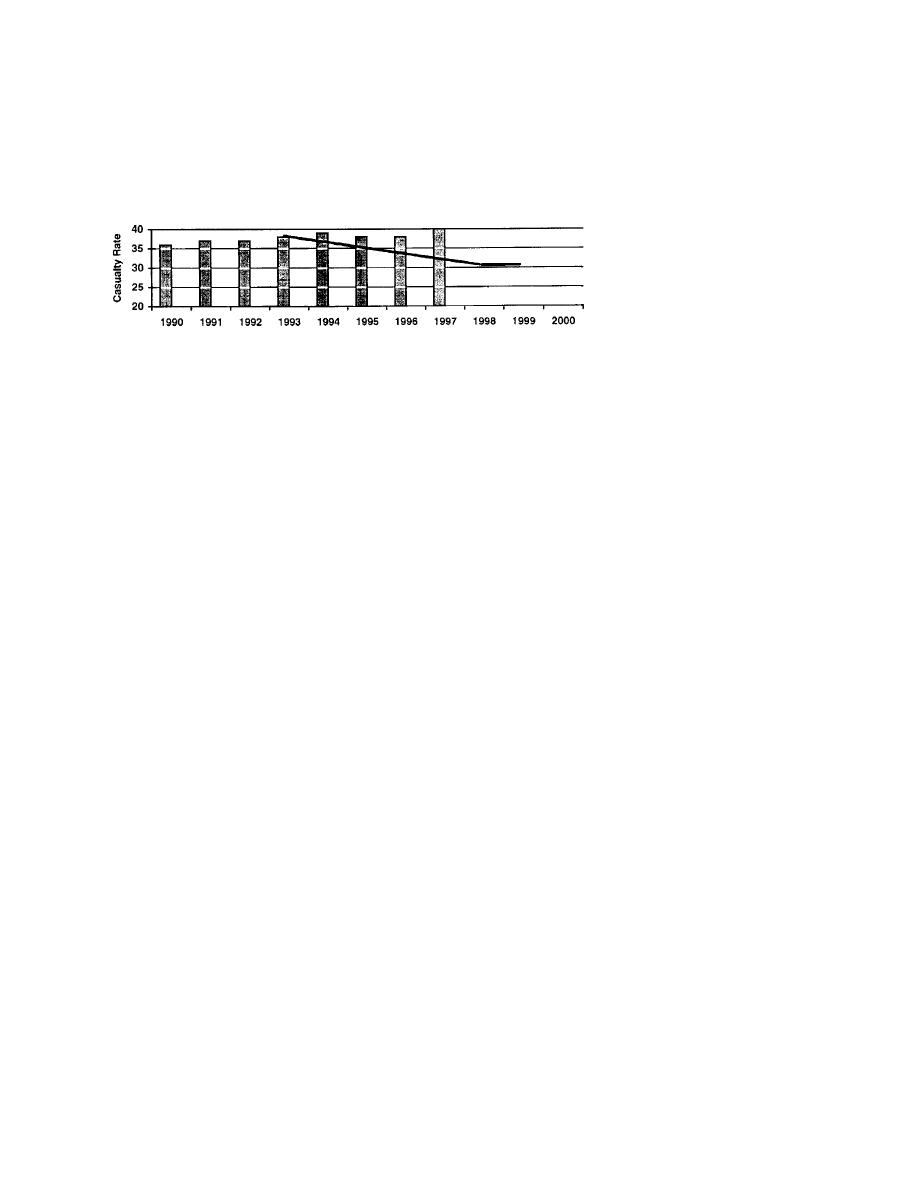
Encl (1) to COMDTINST 16010.8
SAFETY
Goal S4: Eliminate passenger vessel casualties with major loss of life.
FY99 Target: Reduce the number of high risk passenger vessel casualties
by 20%, from the FY93 baseline of 38 casualties/1,000 vessels to 31
casualties/1,000 vessels
Measure: Number of "high risk" vessel casualties (fire, capsizing,
flooding, collision, sinking, grounding) per 1,000 passenger vessels.
Measurement Issues: Baseline is established by a regression curve
obtained from several years of data. Performance is measured against a
selected year on the curve that was the most current available when goal
was developed. Developing data that assesses level of risk of a major
vessel casualty is a difficult task. Major passenger vessel casualties
are rare occurrences, so a relevant proxy measure must be developed. The
associated measure was changed from the FY98 measure "serious passenger
vessel accidents" to "high risk vessel casualties" (allisions, capsizings,
collisions, missing vessels, explosions, fires, floodings, sinkings,
groundings.) This refinement is a better indicator of passenger vessel
risk. The data trend for this measure is not moving toward the goal target
level. This could be caused by several factors: external factors can
eclipse Coast Guard impact; measurement data, or a measure itself, may be
invalid, thus presenting an erroneous view of the real situation; Coast
Guard activities may not be optimized to influence the outcome, and may
need to be refined. Data is obtained from the Coast Guard Marine Safety
Information System. Data is validated by program managers. Confidence in
measure is moderate.
Causal Factors to be Addressed:
Human error in vessel operation.
Poor material condition of vessel or equipment.
Strategies to Achieve Target:
Ongoing Strategies:
Improve mariner knowledge and skills by implementing the Standards for
Training Certification and Watchkeeping, a more effective system of
training requirements
Focus on reducing the impact of human error on accidents.
Enforce applicable laws and regulations.
Conduct the Merchant Marine Licensing and Documentation program.
Develop waterway safety activities in cooperation with other agencies
within the Waterways Management initiative.
Execute research and development projects to improve understanding of
human error and fire safety; and support interagency Ship Structure
Committee (SSC) research. Application of this research results in
improved design, materials, construction, and maintenance of ship
structures which results in safer vessels that are less likely to
suffer hull failure and better able to sustain damage.
New Strategies:
Modernize distress communications to create a fully integrated system
that permits distress, safety, law enforcement interaction between the
Coast Guard and mariners.
Enhance port safety by establishing Vessel Traffic Services as part of
the Ports and Waterways Safety System (PAWSS.)
Pursue regulatory activity to require onboard High Capacity Passenger
Vessel Response Plans for emergency situations.
Complete development of a risk management guide, in conjunction with
the Passenger Vessel Association, that assists operators in applying
effective solutions to the most pressing safety problems.
PP-16



 Previous Page
Previous Page
